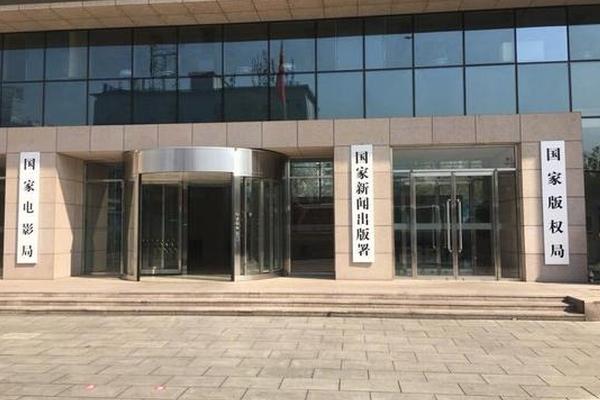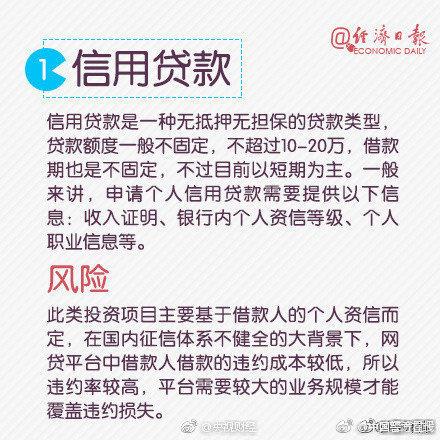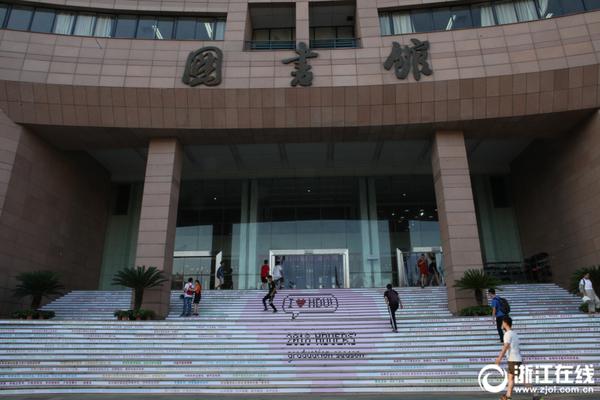
Performance system refers to the management system established to evaluate employee performance and improve employee work ability and quality. It is an important part of enterprise management and one of the cores of enterprise management.
Performance management system refers to the continuous cycle of managers and employees at all levels to participate in the formulation of performance plans, performance coaching and communication, performance appraisal and evaluation, application of performance results, and the improvement of performance goals in order to achieve organizational goals.
Performance management system refers to the continuous cycle of managers and employees at all levels to participate in the formulation of performance plans, performance coaching and communication, performance appraisal and evaluation, application of performance results, and the improvement of performance goals in order to achieve organizational goals. Construction Aspect Part I The development of the performance management system has gone through three processes: assessment and performance appraisal, and the formation of a performance management system.
Human resources performance management system refers to a comprehensive and systematic management system, which aims to improve the work efficiency and performance of enterprise employees by setting goals, evaluating performance, feedback and motivation. It mainly includes the following links: Goal setting: The first step of the human resources performance management system is to set goals.
Performance management system is a comprehensive management.The system usually includes the following aspects: Setting performance goals: Enterprises need to formulate clear performance goals, including business goals, financial goals, customer satisfaction goals, employee development goals, etc., to ensure that performance goals are consistent with the strategic goals of the enterprise.

1. Key Performance Indicators (KPI), also known as Key Performance Indicators, Important Performance Indicators, Performance Evaluation Indicators, etc., refers to the most important indicator to measure the effectiveness of a management work, and is a data management It must be an objective and measurable performance indicator.
2. What does KPI mean? In layman's terms, KPI refers to key performance indicators, which is the abbreviation of KeyPerformanceIndicator.
3. What is KPI assessment? KPI assessment, the abbreviation of KeyPerformanceIndicator, refers to the key performance indicator assessment method. Divided according to the management theme,Performance management can be divided into two categories. One is incentive performance management, which focuses on stimulating employees' enthusiasm for work, which is more suitable for enterprises in the growth period.
4. KPI is a key performance indicator. In fact, it is to formulate plans and goals, and then score according to the completion. KPI is a management tool when an enterprise management structure is divided into multiple layers, and the company's executives control the grassroots movement. The core of KPI is the weight of various work achievements and The weight determines the distribution of power to the senior management of the company.
5. The full name of KPI is Key Performance Indicator, that is, key performance indicators. It is a set of key indicators used by enterprises or organizations to measure business and work performance. It can be used to evaluate work performance, monitor whether the goals are achieved and guide business. Decision-making.
6. KPI assessment, the abbreviation of KeyPerformanceIndicator, refers to the key performance indicator assessment method. According to the management theme, performance management can be divided into two categories. One is incentive performance management, which focuses on stimulating employees' enthusiasm for work and is more suitable for enterprises in the growth period.
1. [Answer]: Step: A Through the strategic map, the key performance indicators of the enterprise can be established, and the strategy of the enterprise can also be decomposed into a series of "strategic measurement goals", that is The contents of the strategic map.
2. Determine business goals: First of all, clarify the business goals of the enterprise and transform them into measurable specific indicators, such as sales, customer satisfaction, production efficiency, etc.Formulate an index system: according to the business goals and actual situation, formulate an index system that meets the characteristics and needs of the enterprise.
3. There are generally two ways to establish a KPI system: one is to decompose according to the organizational structure, from goal to means; the second is to decompose according to the main process, that is, from goal to responsibility method.
4. Clarify performance goals: The performance appraisal system should have clear performance goals, which should be consistent with the strategic goals of the organization and the job responsibilities of employees. Performance goals should be specific, quantifiable, achievable, and able to stimulate employees' enthusiasm and work motivation.
5. Establishing a performance appraisal system for supply chain quality management can help enterprises evaluate the effect and improvement direction of supply chain quality management, and promote the continuous improvement of supply chain quality.
1. The KPI system refers to the collection of Key Performance Indicators, which is a framework for managing and evaluating the strategy, goals and performance of an enterprise or organization.
2. The KPI index system indicates the results that should be generated by each work content or the standards that should be met, so as to quantify the best.
3. KPI indicators include: performance indicators, behavior indicators, prevention deduction indicators, etc.
kpi refers to the key performance of the enterpriseStandard is a targeted quantitative management indicator that measures process performance within the organization through the setting, sampling, calculation and analysis of the key parameters of the input and output of a process.
KPI is the abbreviation of Key Performance Indicator. It is a quantitative indicator used to measure the performance and achievements of organizations, teams or individuals in achieving specific goals.
refers to those key indicators that can reflect the performance of enterprises, departments or individuals. KPI is an important basis for measuring performance. It can help enterprises, departments and individuals understand the focus and goals of work, and help improve work efficiency and work results.
KPI refers to key performance indicators. KPI is KeyThe abbreviation of Performance Indicator refers to key performance indicators.
What does kpi mean? KPI (Key Performance Indicators) refers to key performance indicators, which are quantitative indicators used to measure organizational or team performance.
Kpi refers to key performance indicators, also known as main performance indicators, important performance indicators, performance evaluation indicators, etc. It is the most important indicator to measure the effectiveness of management work. It is a tool for data management and must be an objective and measurable performance indicator. The term is often used to measure financial and general administrative affairs.
Dynamic import export data modeling-APP, download it now, new users will receive a novice gift pack.
Performance system refers to the management system established to evaluate employee performance and improve employee work ability and quality. It is an important part of enterprise management and one of the cores of enterprise management.
Performance management system refers to the continuous cycle of managers and employees at all levels to participate in the formulation of performance plans, performance coaching and communication, performance appraisal and evaluation, application of performance results, and the improvement of performance goals in order to achieve organizational goals.
Performance management system refers to the continuous cycle of managers and employees at all levels to participate in the formulation of performance plans, performance coaching and communication, performance appraisal and evaluation, application of performance results, and the improvement of performance goals in order to achieve organizational goals. Construction Aspect Part I The development of the performance management system has gone through three processes: assessment and performance appraisal, and the formation of a performance management system.
Human resources performance management system refers to a comprehensive and systematic management system, which aims to improve the work efficiency and performance of enterprise employees by setting goals, evaluating performance, feedback and motivation. It mainly includes the following links: Goal setting: The first step of the human resources performance management system is to set goals.
Performance management system is a comprehensive management.The system usually includes the following aspects: Setting performance goals: Enterprises need to formulate clear performance goals, including business goals, financial goals, customer satisfaction goals, employee development goals, etc., to ensure that performance goals are consistent with the strategic goals of the enterprise.

1. Key Performance Indicators (KPI), also known as Key Performance Indicators, Important Performance Indicators, Performance Evaluation Indicators, etc., refers to the most important indicator to measure the effectiveness of a management work, and is a data management It must be an objective and measurable performance indicator.
2. What does KPI mean? In layman's terms, KPI refers to key performance indicators, which is the abbreviation of KeyPerformanceIndicator.
3. What is KPI assessment? KPI assessment, the abbreviation of KeyPerformanceIndicator, refers to the key performance indicator assessment method. Divided according to the management theme,Performance management can be divided into two categories. One is incentive performance management, which focuses on stimulating employees' enthusiasm for work, which is more suitable for enterprises in the growth period.
4. KPI is a key performance indicator. In fact, it is to formulate plans and goals, and then score according to the completion. KPI is a management tool when an enterprise management structure is divided into multiple layers, and the company's executives control the grassroots movement. The core of KPI is the weight of various work achievements and The weight determines the distribution of power to the senior management of the company.
5. The full name of KPI is Key Performance Indicator, that is, key performance indicators. It is a set of key indicators used by enterprises or organizations to measure business and work performance. It can be used to evaluate work performance, monitor whether the goals are achieved and guide business. Decision-making.
6. KPI assessment, the abbreviation of KeyPerformanceIndicator, refers to the key performance indicator assessment method. According to the management theme, performance management can be divided into two categories. One is incentive performance management, which focuses on stimulating employees' enthusiasm for work and is more suitable for enterprises in the growth period.
1. [Answer]: Step: A Through the strategic map, the key performance indicators of the enterprise can be established, and the strategy of the enterprise can also be decomposed into a series of "strategic measurement goals", that is The contents of the strategic map.
2. Determine business goals: First of all, clarify the business goals of the enterprise and transform them into measurable specific indicators, such as sales, customer satisfaction, production efficiency, etc.Formulate an index system: according to the business goals and actual situation, formulate an index system that meets the characteristics and needs of the enterprise.
3. There are generally two ways to establish a KPI system: one is to decompose according to the organizational structure, from goal to means; the second is to decompose according to the main process, that is, from goal to responsibility method.
4. Clarify performance goals: The performance appraisal system should have clear performance goals, which should be consistent with the strategic goals of the organization and the job responsibilities of employees. Performance goals should be specific, quantifiable, achievable, and able to stimulate employees' enthusiasm and work motivation.
5. Establishing a performance appraisal system for supply chain quality management can help enterprises evaluate the effect and improvement direction of supply chain quality management, and promote the continuous improvement of supply chain quality.
1. The KPI system refers to the collection of Key Performance Indicators, which is a framework for managing and evaluating the strategy, goals and performance of an enterprise or organization.
2. The KPI index system indicates the results that should be generated by each work content or the standards that should be met, so as to quantify the best.
3. KPI indicators include: performance indicators, behavior indicators, prevention deduction indicators, etc.
kpi refers to the key performance of the enterpriseStandard is a targeted quantitative management indicator that measures process performance within the organization through the setting, sampling, calculation and analysis of the key parameters of the input and output of a process.
KPI is the abbreviation of Key Performance Indicator. It is a quantitative indicator used to measure the performance and achievements of organizations, teams or individuals in achieving specific goals.
refers to those key indicators that can reflect the performance of enterprises, departments or individuals. KPI is an important basis for measuring performance. It can help enterprises, departments and individuals understand the focus and goals of work, and help improve work efficiency and work results.
KPI refers to key performance indicators. KPI is KeyThe abbreviation of Performance Indicator refers to key performance indicators.
What does kpi mean? KPI (Key Performance Indicators) refers to key performance indicators, which are quantitative indicators used to measure organizational or team performance.
Kpi refers to key performance indicators, also known as main performance indicators, important performance indicators, performance evaluation indicators, etc. It is the most important indicator to measure the effectiveness of management work. It is a tool for data management and must be an objective and measurable performance indicator. The term is often used to measure financial and general administrative affairs.
Sourcing intelligence platforms
author: 2024-12-24 01:44Agricultural machinery HS code lookups
author: 2024-12-24 01:23How to analyze import export documentation
author: 2024-12-23 23:53How to analyze import export documentation
author: 2024-12-23 23:35How to ensure transparency in supply chains
author: 2024-12-23 23:24Precious stones HS code classification
author: 2024-12-24 01:15How to facilitate cross-border returns
author: 2024-12-24 00:35How to analyze customs transaction records
author: 2024-12-24 00:26Global trade data warehousing solutions
author: 2024-12-23 23:59HS code mapping for infant formula imports
author: 2024-12-23 23:51 HS code integration with digital customs forms
HS code integration with digital customs forms
518.93MB
Check Insightful trade route analysis
Insightful trade route analysis
239.28MB
Check Medical PPE HS code verification
Medical PPE HS code verification
768.12MB
Check Global trade risk heatmaps
Global trade risk heatmaps
628.27MB
Check HS code mapping for ASEAN countries
HS code mapping for ASEAN countries
944.33MB
Check Global trade data-driven asset utilization
Global trade data-driven asset utilization
879.52MB
Check Agribusiness HS code-based analysis
Agribusiness HS code-based analysis
661.32MB
Check HS code metrics for performance dashboards
HS code metrics for performance dashboards
798.94MB
Check Trade data solutions for wholesalers
Trade data solutions for wholesalers
945.29MB
Check Mining equipment HS code references
Mining equipment HS code references
759.95MB
Check Industry consolidation via HS code data
Industry consolidation via HS code data
368.52MB
Check HS code-based predictive analytics
HS code-based predictive analytics
732.66MB
Check How to track seasonal trade patterns
How to track seasonal trade patterns
864.35MB
Check How to benchmark HS code usage
How to benchmark HS code usage
659.31MB
Check Global trade finance benchmarking
Global trade finance benchmarking
344.48MB
Check How to manage trade credit risks
How to manage trade credit risks
743.43MB
Check Comparative trade route analysis
Comparative trade route analysis
357.57MB
Check HS code tagging in ERP solutions
HS code tagging in ERP solutions
136.28MB
Check Trade flow analysis by HS code category
Trade flow analysis by HS code category
349.33MB
Check Trade data for healthcare supplies
Trade data for healthcare supplies
135.76MB
Check HS code compliance for South American markets
HS code compliance for South American markets
519.14MB
Check HS code-based supply risk mitigation
HS code-based supply risk mitigation
184.35MB
Check Trade data for logistics companies
Trade data for logistics companies
533.55MB
Check Trade data for intellectual property checks
Trade data for intellectual property checks
149.55MB
Check How to track seasonal trade patterns
How to track seasonal trade patterns
633.24MB
Check Global trade intelligence newsletter
Global trade intelligence newsletter
532.69MB
Check Comparative freight cost modeling
Comparative freight cost modeling
149.69MB
Check HS code mapping tools for manufacturers
HS code mapping tools for manufacturers
474.41MB
Check Middle East trade compliance platform
Middle East trade compliance platform
624.99MB
Check Supplier relationship management with trade data
Supplier relationship management with trade data
465.83MB
Check HS code-based warehousing strategies
HS code-based warehousing strategies
557.76MB
Check HS code compliance for Nordic countries
HS code compliance for Nordic countries
338.95MB
Check HS code reference for mineral exports
HS code reference for mineral exports
975.47MB
Check Predictive supplier scoring algorithms
Predictive supplier scoring algorithms
238.72MB
Check Trade data for route profitability
Trade data for route profitability
982.63MB
Check Global supply chain partner networks
Global supply chain partner networks
848.11MB
Check
Scan to install
Dynamic import export data modeling to discover more
Netizen comments More
1268 HS code analytics for niche markets
2024-12-24 01:08 recommend
1810 Global trade resource libraries
2024-12-24 00:28 recommend
583 US-China trade data comparisons
2024-12-24 00:09 recommend
1773 global trade intelligence
2024-12-23 23:32 recommend
2208 How to analyze trade seasonality
2024-12-23 23:22 recommend